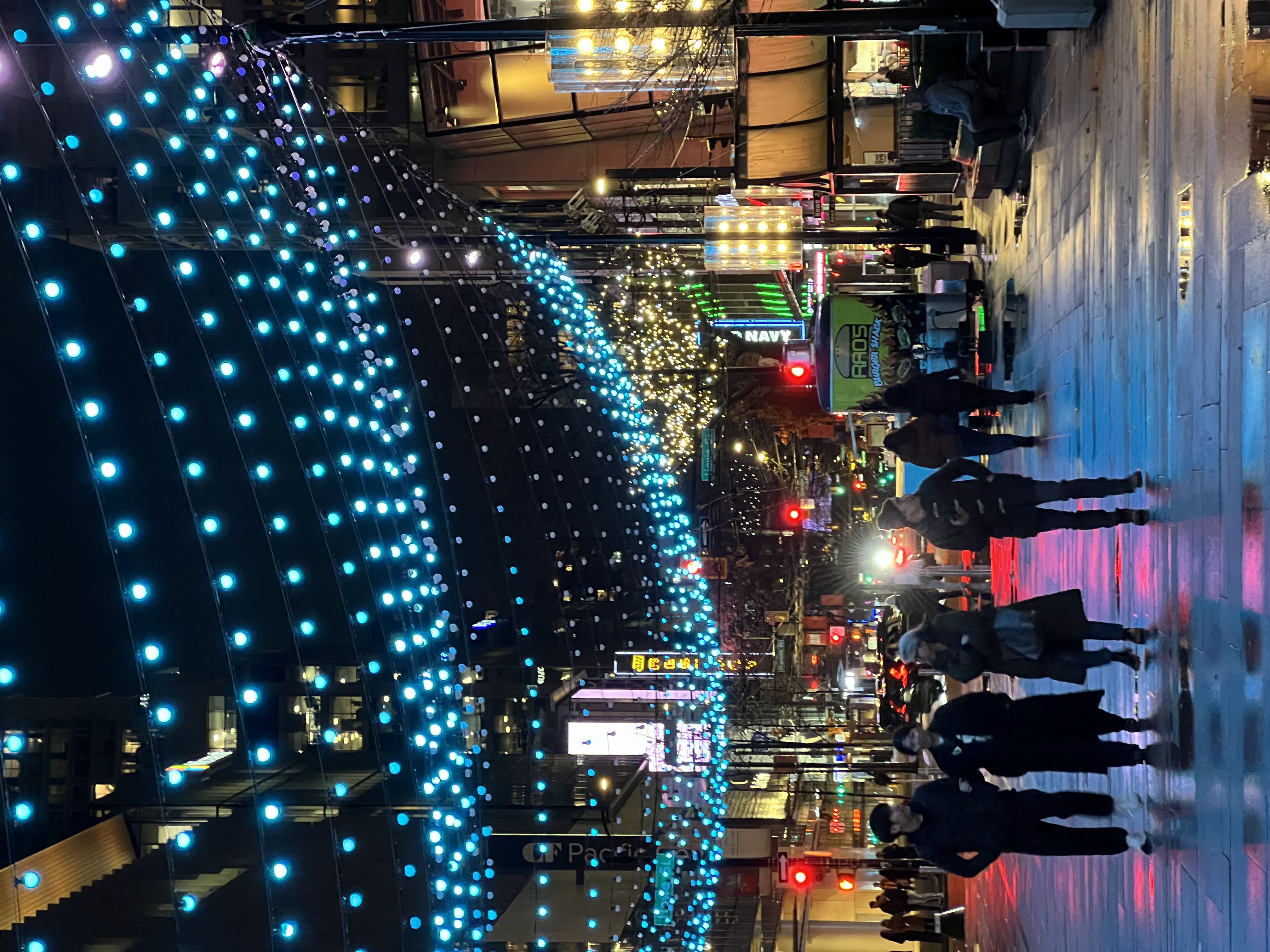Repost- Time, for Advent
sehnsucht pet thursday
As in the title, this post is reposted from the UWCCF blog site on Medium. Be sure to check out the rest of the UWCCF blog here.
 |
|---|
| A November Evening at Robson Square |
Last Sunday, some churches observed Christ the King Sunday, marking the end of the Christian year. This also means that this Sunday is the start of another one, a “Christian New Year” if you would, with the advent of Advent. (See what I did there? 😛)
As we approached Advent, I wanted to write something about it but had not quite gotten around to doing so. After sitting myself down, I opened Spotify and went to the daylist, as one sometimes does. This particular Thursday evening was titled “sehnsucht pet thursday”—what in the (probably) German was Sehnsucht??
 |
|---|
| My first guess was sunset; they didn’t teach us this in A1 German! |
Intrigued, I searched it up, and ended up laughing (definition from Wikipedia):
Sehnsucht (German pronunciation: [ˈzeːnˌzʊxt]) is a German noun translated as “longing”, “desire”, “yearning”, or “craving”.
Though there is probably more nuance to Sehnsucht than this definition provides, the general thought is quite similar to what I was hoping to touch on: longing, desiring, and yearning.
Going back to the Christian calendar, there is this period after Pentecost called Ordinary Time, the longest chunk of time in the church’s yearly rhythms (more than 7 months) that is not defined by a particular theme like how Christmas, Pentecost, or Easter might be. Sundays during this time are referred to by a marker to the last “event,” that being how many Sundays after Pentecost we are, such as the Twenty-fifth Sunday after Pentecost.
In some ways, this mirrors the vast majority of our life as Christians, which has an element of waiting to it. You may have heard of it described as “in between the already-and-not-yet,” that being the time in between the ascension of Christ, and His second coming. Even in our Gregorian calendar, we have historically used a notable event (the birth of Christ) to mark time: AD 2024, where AD stands for anno Domini, “in the year of our Lord.”
Advent invites us to do some more waiting, but it is not in vain! Thankfully, we are not Vladimir and Estragon; our waiting is done in the full, embodied reality of the Incarnation, Crucifixion, Resurrection and Ascension of Christ.
You came once for your people, O Lord,
and you will come for us again.Taken from “A Liturgy to Mark the Start of the Christmas Season” (Every Moment Holy, Volume I)
In the Gospel of Luke, God promises Simeon that he will not die before he has seen the Lord’s Christ—the Messiah, the promised Saviour. When Joseph and Mary bring baby Jesus into the temple, Simeon blesses God, saying:
“Lord, now you are letting your servant depart in peace,
according to your word;
for my eyes have seen your salvation
that you have prepared in the presence of all peoples,
a light for revelation to the Gentiles,
and for glory to your people Israel.”Luke 2:29–32 (ESV)
As we leave Ordinary Time and enter into Advent, a season that perhaps could be described as Sehnsucht—waiting in hope, anticipating the long-awaited Immanuel, God with us—are we like Simeon, who rejoiced upon seeing the fulfillment of the very Word, the light and glory for all peoples, both Jew and Gentile? Are we like Simeon, who was so content and filled with joy that he was ready to depart (die) in peace? Are we ready for Christ to come again?
All around us, it seems like the world knows that something is up. On my way to work, I see sparkling lights being put up and trees adorned with brilliant colours; pumpkin spice lattes have morphed into peppermint mochas; people talk about celebrations and reunions, sharing meals with family and friends.
Indeed, something is up! And the Christian knows that these are not ends in themselves, but something that points us to Jesus:
As we decorate and celebrate, we do so to mark the memory of your redemptive movement into our broken world, O God.
Our glittering ornaments and Christmas trees,
Our festive carols, our sumptuous feasts—
By these small tokens we affirm
that something amazing has happened
in time and space—
that God, on a particular night, in a particular place, so many years ago, was born to us, an infant King, our Prince of Peace.Taken from “A Liturgy to Mark the Start of the Christmas Season” (Every Moment Holy, Volume I)
In this season of Advent, let us join with Christians around the world, preparing our hearts to receive the Person in which our hope and longing rests. Let us simultaneously look back to this extraordinary moment in history, but also look forward to when He comes again, and earnestly cry: